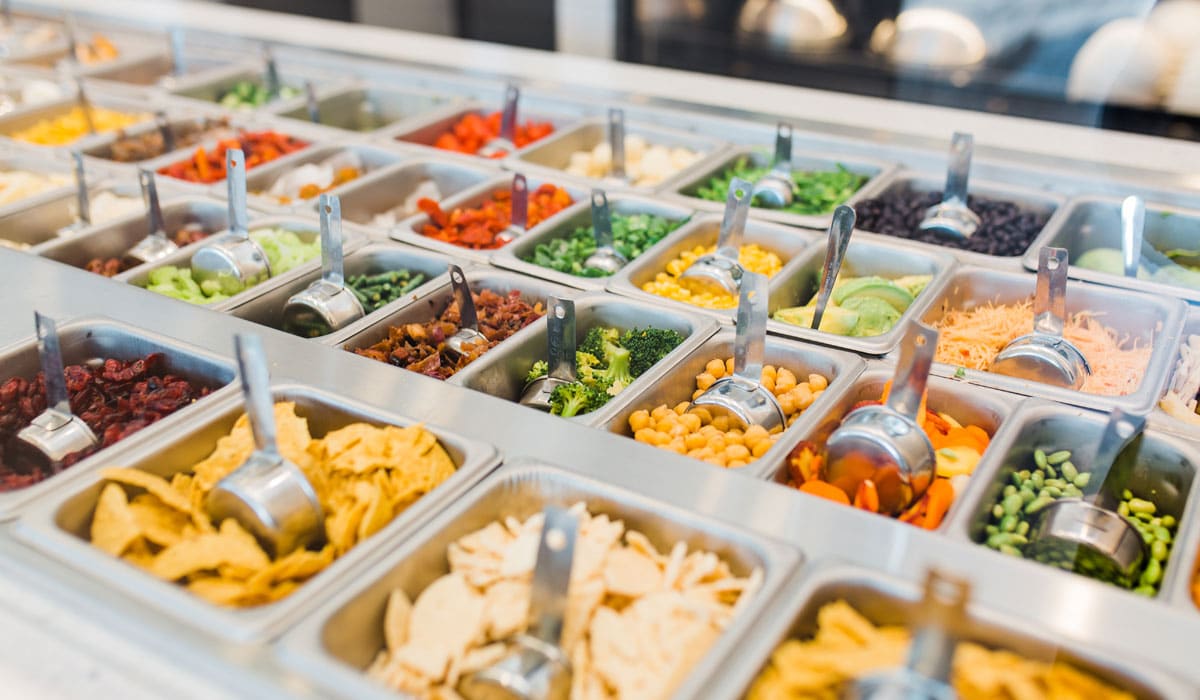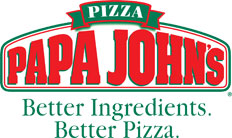Two years ago, almost none of Papa John’s domestic franchisees were discussing development, CEO Rob Lynch said.
And why would they have? In Q2 2019, North America same-store sales decreased 5.7 percent and total revenue dropped 7.1 percent as the company continued to contend with a disrupted culture stirred by public spats with founder and former CEO John Schnatter.
The current environment is quite different as Papa John’s heads into the second half of 2021. North America comps lifted 5.2 percent in Q2, successfully lapping last year’s record year-over-year run of 28 percent. Internationally, same-store sales skyrocketed 21.2 percent, or 27 percent on a two-year basis. AUVs in North America continue to increase beyond the $1 million level, with much of the growth flowing through to unit profitability.
With those type of unit-level economics, it’s easy to understand why almost all U.S. franchisees are talking about growth today. Lynch explained that last year, the chain spoke mostly about building the proper infrastructure to support a “sustainable, significant amount” of unit expansion. Papa John’s not only wanted to increase the number of restaurants it was constructing, but the number of net new locations. The goal was to ensure these units went into the right markets and had tools for success.
READ MORE: Off Record Year, Papa John’s Pivots to Global Growth
The strength of that infrastructure is starting to manifest, however. In the first two quarters of 2021, Papa John’s posted a record 123 net unit openings (68 in Q1 and 55 in Q2). The pizza chain finished Q2 with 5,523 locations systemwide—3,309 in North America and 2,214 internationally. The company has opened a net of 176 units in the trailing four quarters.
“I think this brand had fallen a little bit into a behavior where we’d open a fair amount of restaurants, we’d also closed a lot of restaurants,” Lynch said during the brand’s Q2 earnings call. “With the improved unit volumes as well as our ability to identify better sites in real estate and help our franchisees set up restaurants, we’re anticipating a lot less closures moving forward, which will allow us to sustain high unit growth on an ongoing basis.”
“We were a little bit surprised by how many units we opened in Q1,” he added. “We thought maybe it was a little bit of a lag from the pandemic, but that has continued and we’re actually building momentum.”
Because of Q2’s performance and accelerating interest from new and existing franchisees, Papa John’s raised its global unit growth outlook to 220 to 260 net new units this year. About 80 percent of that will come from international markets, which is the ratio Papa John’s is shooting for on an ongoing basis. The chain operates in roughly 50 countries while its competitors have planted flags in more than 100.

The brand is making moves to change that, though. In late June, Papa John’s announced a partnership with franchisee PJ Western Group to open 250 restaurants in Germany in the next seven years. And then on Thursday, the company revealed a deal with its largest franchisee Drake Food Service International to open more than 220 stores by 2025. That includes more than 170 restaurants across Latin America, Spain, and Portugal, where the operator already runs more than 280 units.
In recent years, Papa John’s has entered 12 new countries, like France, Spain, Tunisia, Iraq, the Netherlands, Morocco, Kazakhstan, Kyrgyzstan, Poland, Pakistan, and Portugal.
But Lynch said not to disregard growth happening in North America either. New franchisees are excited about Papa John’s potential for a variety of reasons, one being the lack of opportunities in other national players. He mentioned that Domino’s and Pizza Hut have many restaurants in most of their territories that are already accounted for, while Papa John’s is half as large. There’s more whitespace, which means more room for incoming operators. With current franchisees, Papa John’s is going into each of their markets and leveraging analytical tools to find opportunities and create more saturation. That in turn will reduce drive times and improve customer service.
“We think that global unit development will be the biggest driver of our overall unit development,” the CEO said. “But domestic development is absolutely accelerating, primarily with our franchisees, but we’re also building some restaurants. We’re going to open up some of our first company restaurants in a long time here in Q3 and we’re excited about leveraging that strategy to give our franchisees insights into how they can fill in their markets in a productive and profitable way.”
At the store level, sales and customer acquisition have been driven by Papa John’s strong innovation pipeline, such as the continued incremental strength of Epic Stuffed Crust and Parmesan Crusted Papadias. To promote these products, the chain first gave access to members of the Papa Rewards loyalty program—an incentive that increased signups significantly. Papa Rewards has added nearly 500,0000 members per month since the beginning of 2021 and recently surpassed 20 million.
Third-party partnerships remain a key part of Papa John’s digital strategy, as well. In June, the brand integrated Grubhub into its system to go along with Uber Eats, DoorDash, and Postmates. Domestic sales through these channels have lifted nearly 50 percent in the past 12 months.

One of the biggest hurdles between Papa John’s and near-term unit development is the current labor crisis affecting the entire country. To combat that headwind Papa John’s plans to host more than 800 recruiting events in more than 60 markets between August 16 and 22 during the chain’s National Hiring Week. The company hopes to hire more than 20,000 full-time and part-time workers to fill roles such as pizza makers, delivery drivers, shift leaders, managers, and more. The chain hired more than 30,000 new employees in 2020.
To attract and retain labor, Papa John’s added new hiring, referral, and appreciation bonuses for frontline team members. It also made permanent the expanded health, wellness, paid time off and college tuition benefits it rolled out during the pandemic. Lynch said Papa John’s has seen some improvement in application flow and hiring in the past few months as states have ended the weekly enhanced unemployment benefits, but labor remains a major challenge.
“We would hire as many people as we find right now,” the CEO said. “The tight labor markets are absolutely a part of the constriction of our ability to deliver the kind of customer service that we’re hoping to deliver. We have high operational standards, and I think our operation has done a great job throughout the pandemic and through these tight labor markets. But I think if the labor markets open up, it will afford all of these delivery companies the ability to deliver by the better customer service and therefore be able to increase the throughput and contribute to our growth ongoing.”
Regarding commodity inflation, Lynch said Papa John’s operates a vertically integrated supply chain that allows it to find areas of productivity and reduced costs. He also believes the chain’s premium brand positioning gives it more pricing power, should that be a necessary step.
Then there’s the Delta variant, which has quickly spread across the U.S. and forced jurisdictions to enforce mask mandates and some restaurants to require proof of vaccinations. However, Papa John’s said it hasn’t seen much of a difference between unrestricted and restricted markets throughout the pandemic. That gives the chain confidence that it will sustain low-to-mid single-digit positive sales growth in North America for the rest of year, no matter how cities and states decide to move forward with the rise of COVID cases.
“We’ve been able to retain the customers that we brought in during the pandemic,” Lynch said. ” … We’re seeing their frequencies and their ticket higher than what we’ve seen in the past. All of that gives us confidence that regardless of what the pandemic situation looks like as we move forward, we’re going to be able to continue strong, to deliver strong results.”
Total revenues increased 11.8 percent to $515 million in Q2. On a trailing 12-month basis, Papa John’s global restaurant sales exceeded $4.5 billion.








